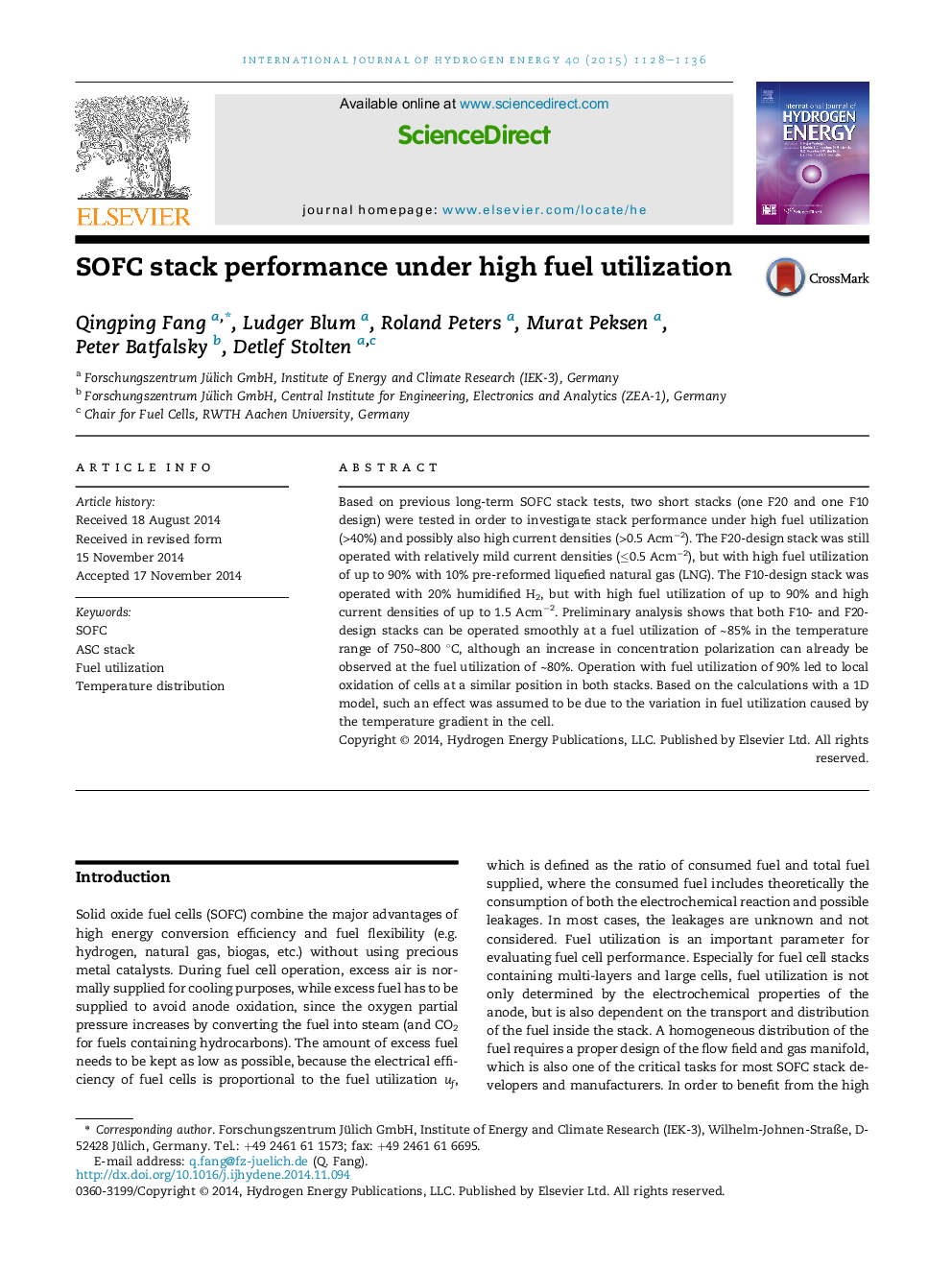| کد مقاله | کد نشریه | سال انتشار | مقاله انگلیسی | نسخه تمام متن |
|---|---|---|---|---|
| 1270208 | 1497471 | 2015 | 9 صفحه PDF | دانلود رایگان |

• A 5-layer F20-design and a 4-layer F10-design stack were operated with high fuel utilization.
• Operation with 90% fuel utilization led to local oxidation of cells in both stacks.
• Local oxidation at similar positions in all cases was a result of temperature distribution.
Based on previous long-term SOFC stack tests, two short stacks (one F20 and one F10 design) were tested in order to investigate stack performance under high fuel utilization (>40%) and possibly also high current densities (>0.5 Acm−2). The F20-design stack was still operated with relatively mild current densities (≤0.5 Acm−2), but with high fuel utilization of up to 90% with 10% pre-reformed liquefied natural gas (LNG). The F10-design stack was operated with 20% humidified H2, but with high fuel utilization of up to 90% and high current densities of up to 1.5 Acm−2. Preliminary analysis shows that both F10- and F20-design stacks can be operated smoothly at a fuel utilization of ∼85% in the temperature range of 750∼800 °C, although an increase in concentration polarization can already be observed at the fuel utilization of ∼80%. Operation with fuel utilization of 90% led to local oxidation of cells at a similar position in both stacks. Based on the calculations with a 1D model, such an effect was assumed to be due to the variation in fuel utilization caused by the temperature gradient in the cell.
Journal: International Journal of Hydrogen Energy - Volume 40, Issue 2, 12 January 2015, Pages 1128–1136